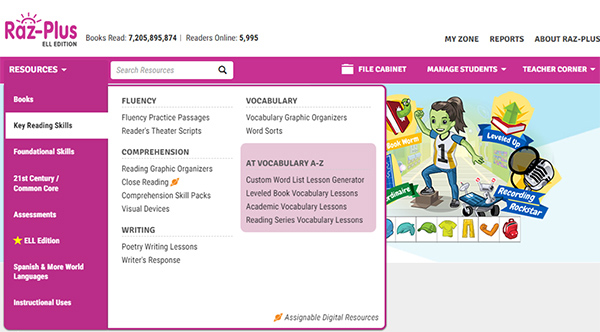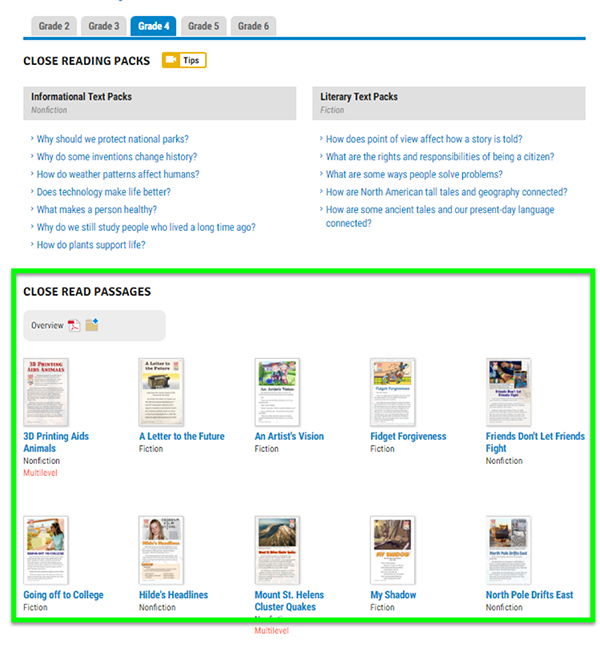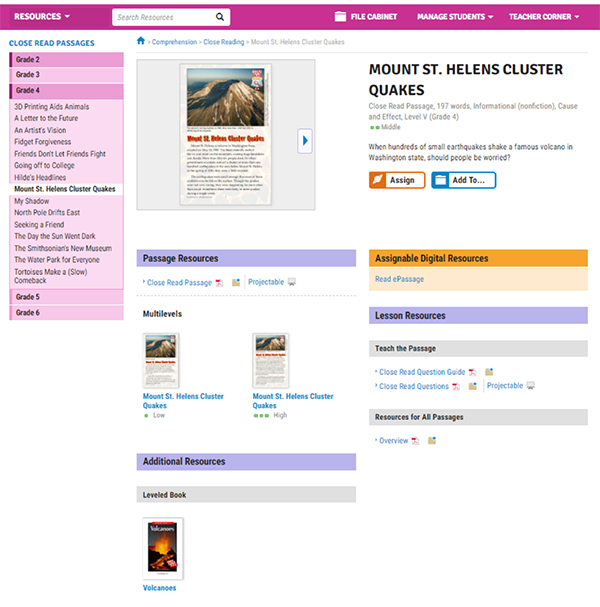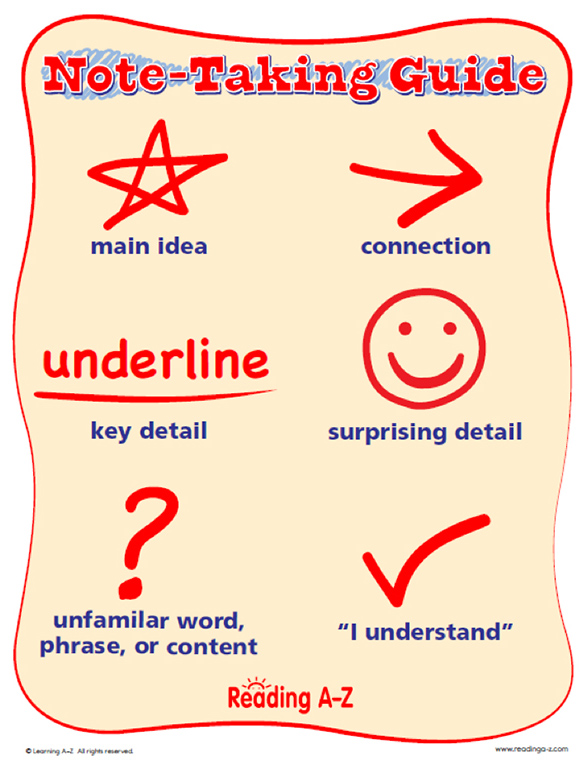About the More Choices, Greater Engagement Series
This series of articles introduces you to the exciting new product features and instructional content launched for Back-to-School 2018. Explore how these updates create more choices for students and engage and motivate them in new ways. Check out the other articles in this series to learn more!
Introducing More Close Read Passages
As educators continue to be encouraged to develop students’ 21st century skills, Learning A-Z continues to look for new ways to provide meaningful resources and tools that help teachers accomplish their goals, while simultaneously engaging and challenging students. We first launched Close Reading Packs to offer a resource that allows teachers to stimulate their classrooms with tools to foster group discussions that spur critical thinking. However, what we learned over time is that teachers of intermediate grades want shorter, complex passages to help students build close reading and higher-order thinking skills. Close Read Passages deliver these condensed close reading resources for teachers. We now offer close to 80 passages, and are adding even more for Back-to-School and beyond.
What Is It?
Close Read Passages, available in Raz-Plus and Reading A-Z for grades 2-6, promote critical thinking and deeper levels of comprehension through multiple reads of a text. Each passage is two to four pages long and includes a Question Guide, which teachers use to guide students through repeated readings, stimulating discussion and helping them to connect new information to existing knowledge and experience.
Some Close Read Passages are thematically linked with a Leveled Book, which provide students an opportunity to make connections between multiple texts. In addition, some passages are available at multiple reading levels.
There are more than 30 text types, as well, including fiction, non-fiction, poems, mystery, interview, adventure, pro/con, and more.
Close Read Passages are designed to be a collaborative activity, which can be used in multiple ways in the classroom:
- Discussion: Have students discuss in small groups or as a whole class.
- Write and Share: Have students work individually or in pairs to write about their thoughts and share with the class.
- Think-Pair-Share: Have students think silently about an answer, then discuss their thoughts in pairs, and finally have each pair share their thoughts with the class.
Where Is It?
-
Under the Resources menu in Raz-Plus or Reading A-Z, scroll down to the Key Reading Skills tab, and select Close Reading.

-
The Close Reading page will give you access to Close Reading Packs (towards the top of the page), as well as the Close Read Passages (lower section of the page). Select the Grade tab at the top to filter for the Close Read Passages that are most appropriate for your class.

-
Once you select a Close Read Passage you will find the following information:
- The passage, in printable, projectable, and (in Raz-Plus) digital formats.
- The Close Read Question Guide, to help facilitate the close reading process for the particular passage.
- The Close Read Questions, which you can print or project for students as they read the passage.
- A general Overview, available for all passages, to help with instruction. The Overview also includes an annotation poster you can hang on the wall, and bookmarks for students so they have a guide for annotation.
- For multilevel passages, the corresponding passages under the Passage Resources section.
- For passages connected to a Leveled Book, the book link available under Additional Resources.

How Do Students Use It?
Students read a passage multiple times, and answer questions along the way through discussion. Each layer requires students to look at the text through a different lens, and the questions build on one another to guide students from the surface level to a deeper understanding of the text.

Annotating, or taking notes on a text, is an essential component of close reading. Students can use the Note-Taking Guide to help them to focus on their thinking as they read. For example, they can make note of an “aha moment” when their understanding of the text becomes more clear, mark difficult or unknown words to explore, make personal connections to something in the text, or identify details that are important to understanding the main idea.

The final Extension Activity is included to encourage students to apply their new knowledge in a broader context. Some tools to help support the close read process include:
- Compare Texts: Have students compare the information presented in the passage with the information in the corresponding Leveled Book.
- Research: Give students an opportunity to further study the given topic.
- Comprehension: Use the Reading Graphic Organizers in Raz-Plus and Reading A-Z to map out key comprehension skills.
- Journals: Have students keep discussion notes or vocabulary definitions in the My Reflection or My Word Journals on Raz-Plus, or in a paper journal if you are using Reading A-Z. Students can also keep their annotated passages in a binder to refer to later.
Don’t Have Access? Start a Free 2-Week Trial
Try any of our award-winning products free for two weeks!


